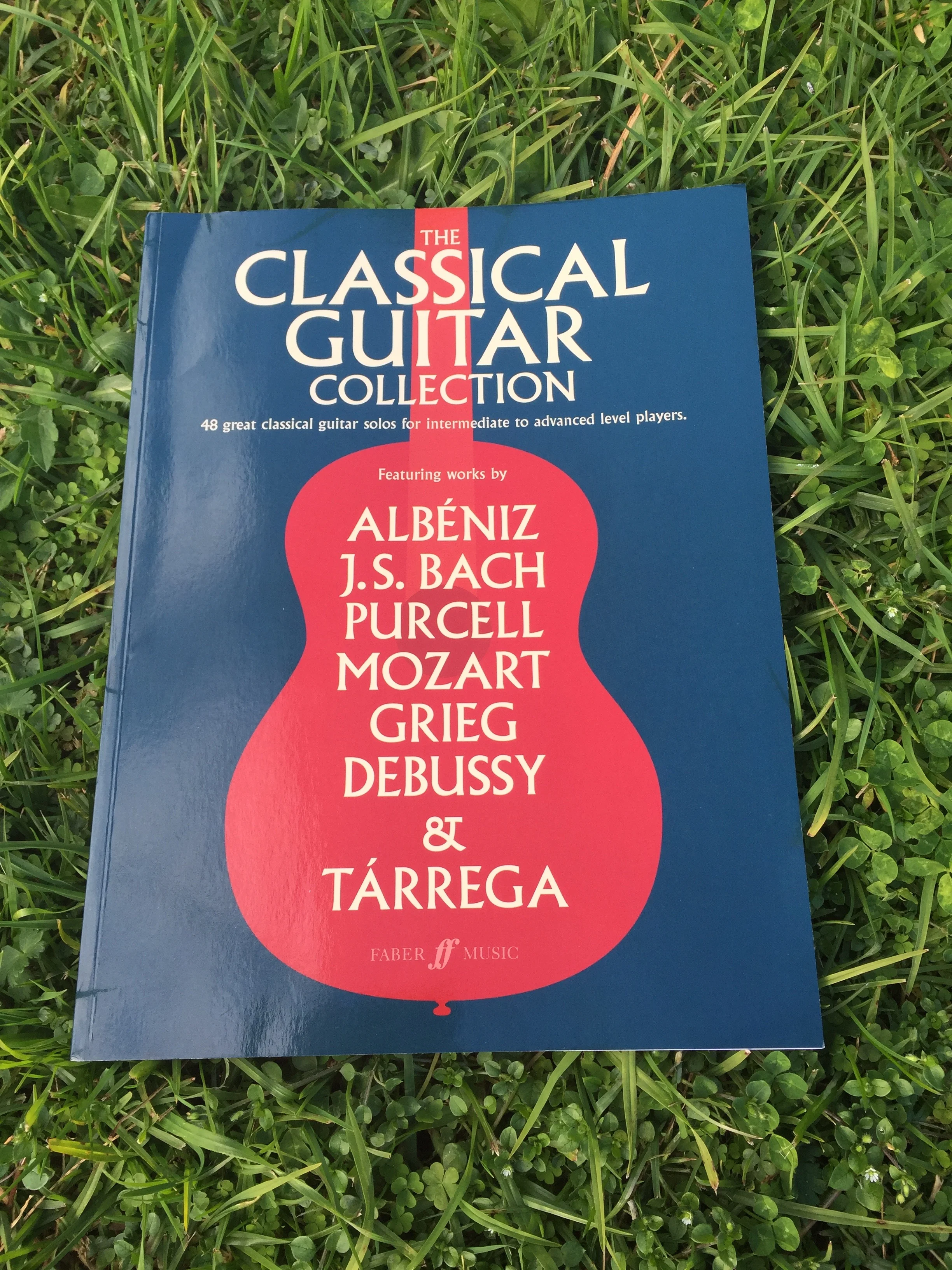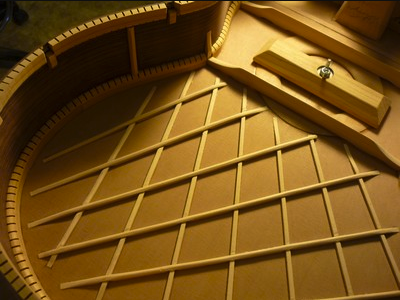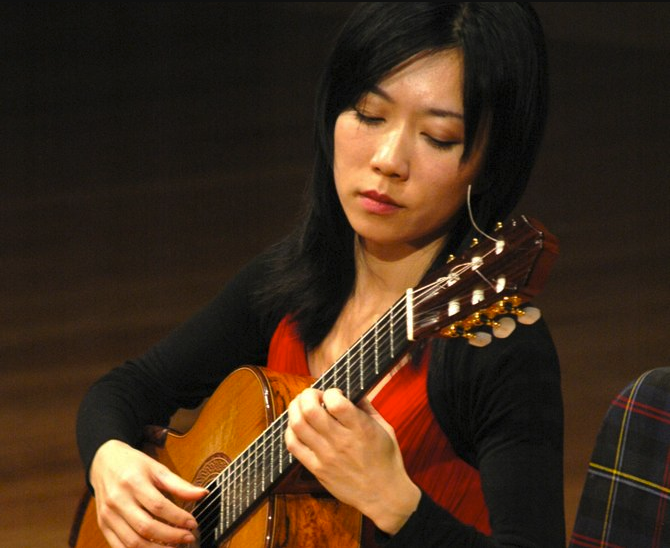"The Classical Guitar Collection" Giveaway Competition & Review
Win this classical guitar book full of transcriptions by the magnificent Julian Bream from Faber Music. Just answer three simple questions and you're in to win!
About two months ago I was contacted by the lovely Rachel Topham at Faber Music asking if I would be interested in reviewing two of their guitar publications. I eagerly jumped at the opportunity to do so especially when she told me that one of the books featured several transcriptions by Julian Bream - my favourite classical guitarist. Rachel kindly agreed to give me an additional copy of each book to giveaway to a lucky reader/viewer. So, big shout out to Faber for being so generous and supportive of the classical guitar community and the guitar community at large.
In this article I will be reviewing 'The Classical Guitar Collection' but FIRST! You can win your very own copy. Here's how:
Competition!!!
Answer the following three questions either in a comment here, or a comment on the YouTube video or on the Facebook post. All of the answers can be found in this article and/or in the YouTube video found at the bottom.
Question 1: What is the name of the famous guitarist that transcribed the majority of pieces in this book?
Question 2: Which Australian composer has a piece in this book and called the famous guitarist John Williams the "King of guitar"?
Question 3: What is the name of the company that published this book?
Make sure that you leave an email address so that I can contact you if you win. The competition is running for 7 days only.
All the best and let your fingers fly!
The Review:
The following is a list of every composer represented in the book:
- Dionisio Aguado
- Isaac Albéniz
- Malcolm Arnold
- Johann Sebastian Bach
- Giuseppe Antonio Brescianello
- Ferdinado Carulli
- Dieterich Buxtehude
- Domenico Cimarosa
- Claude Debussy
- Anton Diabelli
- José Ferrer
- Edvard Grieg
- Mauro Giuliani
- Johann Jacob Froberger
- Augustín Barrios Mangoré
- Johann Kaspar Mertz
- Nicholas Maw
- Wolfgang Amadeus Mozart
- Guillaume Morlaye
- Henry Purcell
- Julio Salvador Sagreras
- Robert Schumann
- Peter Sculthorpe
- Johann Strauss
- Francisco Tárrega
- Fernando Sor
As you can see there is a broad and eclectic variety of composers from different time periods, cultures, and styles represented. The obvious masters are well represented with Aguado, Carulli, Giuliani, Mertz, Sagreras, Tárrega and Sor each having one or more pieces. Unusual yet pleasing inclusions are those of Debussy, Maw, & Sculthorpe. For those of you that have seen the John Williams documentary 'The Seville Concert' you will know that the Australian composer Peter Sculthorpe appeared in that documentary and is most notable for changing Segovia's famous statement about John Williams to him being "the King" of guitar rather than the prince.
How many pieces are in the book?
There are a total of 48 pieces inside with Bach & Buxtehude having four pieces each.
My thoughts
Let me start with my overall opinion of the book. Firstly, the book is aimed at intermediate to advanced players and I think that this has been well-addressed. The Brescianello pieces for example probably rest quite firmly at about the Grade 4 RSM level. At the opposite end of the spectrum we have extremely challenging pieces such as Asturias, Recuerdos de la Alhambra & La Catedral that are all at the ARSM or LRSM level.
Who would I have included?
In all honesty there could be reasons why these composers aren't here but I would have probably tried to include some newer composers such as:
- Andrew York
- Sergio Assad
- Carlos Domeniconi
- Leo Brouwer
- Toru Takemitsu
- Lennox Berkley
There's a few more that I would add to the list but I'll stop there. Perhaps these composers are already have legal obligations with other publishers and therefore couldn't be included. Nevertheless, the book is still fantastic and seeing works by Maw, Sagreras, & Sculthorpe is wonderful. I'm certain it isn't an easy or enviable task having to deliberate over which piece from which composer is going to be included.
What else could add value?
- Foreword & Introduction
- A more detailed notation legend
- Tablature
- Online learning resources & support
Foreword & Introduction. I have a vast collection of classical guitar publications in my personal collection and although many of them do not have a Foreword or Introduction those that do seem to show more care and thought and often they offer an insight or a tidbit of information that is difficult to find elsewhere. For example I have a publication of the complete solo works of Heitor Villa Lobos that has an absolutely astonishing introduction in English & Spanish and it also has some historical examples and insights into the composer's treatment of notation within several of the pieces. Admittedly this is much easier to do if the book is devoted solely to a single composer.
Notation legend. The notation legend is extremely brief although in fairness this is aimed at intermediate to advanced players so perhaps there is an assumption that many of the fundamentals of music reading are already known.
Tablature. Hmmm...to include or not to include? Maybe I'm a softy but in this day and age with music writing software capable of making tabs with a single keystroke I can only imagine that tabs weren't added because of the price of printing or perhaps the idea was to only make this book accessible to people that can read music. In any case I do think that this restricts the market and appeal enormously. There are so many wonderful and keen players out there that cannot read music. Yes, we could take the hardline approach and suggest that they learn to 'read the dots' but to me that just isn't necessary anymore. I would almost go so far as to say that every guitar publication (that isn't for exams) should include tabs!
Online Support. In this day and age there is a growing expectation that an online community where people can gather to share ideas & opinions is a given. A multitude of players out there need to hear the pieces that they're trying to learn for various reasons. The most glaring reason is that they can't read music or they lack the confidence to believe that their attempts to read the music and play it are correct. Guitar notational software such as Guitar Pro 6 & 7 is easily capable of creating MIDI, WAV, and MP3 files which sound quite close to an actual classical guitar. If I was publishing this book I would also upload the sound files to every piece as a valuable learning and teaching resource to enhance the book's appeal and reach.
La Catedral...
Unfortunately the Preludio Saudade of this wonderful piece has been written incorrectly. The parts have been split into 3 voices which makes for an overly complicated visual experience. There is no necessity for this. The best option is to simply use two voices with the accompanying voice split into semiquavers and the leading voice included rhythmically as part of the accompaniment. Below are two excerpts - the first is taken from the book and the second is from a 3rd party:
Here is how it should have been written.
Two other minor details that could have been edited for consistency would be:
- Tuning indications
- Right-hand fingering indications
I won't point out the right-hand fingering indications suffice it to say that some pieces are positively overflowing with right-hand suggestions whereas others are completely devoid. I am of the opinion that consistency is key - either make suggestions for all or don't make suggestions for any.
Overall Conclusion:
The book is fabulous. I'm a pedantic type of guy and honestly none of the things I have mentioned with the exception of the issue with La Catedral are deal breakers. There are pieces here that I haven't seen or heard anywhere else and that in itself is worth the money. Add to this the fact that Julian Bream has transcribed at least 50% of the pieces and you're winning. Any guitarist that learns to play the pieces contained therein will have a stunning repertoire worthy of any concert stage.
Check out the video below for details about how you can win yourself a copy of this book for yourself or read the instructions:
Modern Classical Guitar Design Part 5: Lattice Bracing
An exciting article explaining the history, development, and the pros & cons of classical guitars with lattice bracing.
Introduction
Up until a couple of decades ago most if not all classical guitars were constructed using the fan bracing method or variations thereof. Prior to that 'ladder bracing' was used in the smaller predecessors of the modern guitar. Once Antonio de Torres arrived on the scene the style of bracing for the soundboard changed with his radical new concept of braces splaying out in the shape of a fan. This style of bracing has been used successfully for almost two centuries and it is still probably the most common type of bracing used in classical guitar design today. However, in the 80s master Australian luthier Greg Smallman revolutionised the bracing system for the guitar soundboard by introducing a system known as 'lattice bracing'.
The glorious phenomenon with the guitar is that it is still evolving. It is a work in progress and it seems as though the rate of change and experimentation with its fundamental design is an ever-changing thing. There is probably no other instrument on earth that is made with such wildly varying designs, shapes, patterns, styles, sizes, materials and so on. Guitar luthiers seem like a wild bunch always pushing the boundaries of guitar style, design, and most importantly - sound.
What does a classical guitar fan brace look like?
In the picture below you can see a wonderful example of fan bracing used to support the top. The braces all 'fan' out towards the edges of the soundboard hence the term 'fan bracing'. There are several well-known variations to the basic Torres design:
- Amadeo
- Bouchet (pictured below)
- Cordoba
- Esteso
- Panormo
- Tatay
- Yacobi
These innovations do have an impact on the tones and frequencies that are projected and amplified by the guitar itself. The traditional 'ladder bracing' ran at a 90degree angle to the soundboard grain produce a thinner, treble biased sound somewhat similar to that of the lute. The Torres 'fan bracing' combined with a larger body and thinner top produced warm instruments with an enhanced bass response and projection.
Enter Greg Smallman - Bearded luthier extraordinaire with his revolutionary 'lattice bracing' innovation. Three decades ago Australian Greg Smallman irreversibly changed the design of classical guitar bracing by introducing a system of overlapping struts all joined together using a combination of carbon fibre and balsa wood in a 'lattice' framework joined to a top that is much thinner than tops using the conventional Torres bracing. The result is a guitar with extraordinary clarity, even and consistent frequency response & fuller tone.
Pros & Cons of a lattice-braced guitar
Pros:
- Loud. An increase in volume offers the guitarist more dynamic possibilities
- Sustain for days
Cons:
- Non-traditional tone (sometimes described as nasal)
- Too Lound (is there even such a thing?)
Famous players that play lattice braced guitars
- John Williams
- Xuefei Yang
- Carlos Bonnel
- Timothy Kain
- Stepan Rak
- David Tannenbaum
A wonderful example of the power of a lattice braced guitar can be heard in John Williams' documentary 'The Seville Concert'. John visits Greg Smallman at his home in NSW, Australia. During their meeting John plays a snippet of the third movement of the 'Concerto in D RV230' by Antonio Vivaldi after they've visited Smallman's workshop. The power and clarity displayed by that instrument during that wee snippet is undeniable.
In conclusion
At the end of the day the most important thing is how the guitar makes you feel. Choose a guitar that suits you not because it has some cutting-edge design features or because of its brand.
Check out my other articles in the
'Modern Classical Guitar Design Series':
Part 8: Fanned Frets
Part 7: Arched back
Part 6: Double Tops
Part 4: Armrest
Part 3: Soundport
Part 2: Indented Cutaway
Part 1: Elevated Fingerboard
Let your fingers fly!












